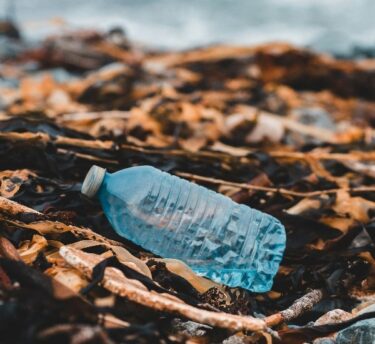Table of Contents
- How to comply with REACH
- Who needs to comply with REACH
- REACH-like regulations
- Anthesis REACH services
Share this guide
What is REACH?
REACH is a European Union regulation which entered into force in June 2007 – the acronym stands for the Registration, Evaluation, Authorisation and Restriction of Chemicals.
The aim of REACH is to protect human health and the environment from the risks posed by chemicals while enhancing the competitiveness of the EU chemicals industry.
REACH also promotes the use of alternative methods for hazard assessment and legally requires companies to share data – eliminating the need for every company to repeat testing.
REACH was the first regulation worldwide that put the burden of proof to show the safe use of chemicals on the chemical industry, even for chemicals already on the market. Several countries have followed suit and proposed similar regulations (see REACH-like regulations below).
Find out more on European Chemicals Agency (ECHA) official website.
How do companies comply with REACH?
To comply with the REACH regulation, companies must demonstrate to The European Chemicals Agency (ECHA) how a chemical can be safely used. This information must also be communicated to users.
In practice, companies submit a dossier of information to ECHA, which provides information on the hazard, its uses and methods for reducing the risks of the chemical during use. Companies should work together to supply this information to ECHA, even if they are competitors.
Every dossier that is submitted to the European Chemicals Agency (ECHA) will be reviewed by an EU Member State. Registering companies may be asked for additional supporting information if they find the dossier does not sufficiently address the potential risk for that substance. If risks cannot be managed, the chemical can be restricted, and over time, the most hazardous substances should be substituted with less dangerous ones and therefore eliminated. ECHA can also restrict particular uses of a chemical or make a chemical subject to authorisation before use.
Who needs to comply with REACH?
Anyone importing or manufacturing chemicals into the European Union needs to comply with REACH. This includes chemicals that are formulated into finished goods, for example, paint or cleaning products, and even solid objects (named ‘articles’, for example, a scented children’s toy). Companies must consider the impact of REACH on their products even if they don’t consider themselves a ‘chemical company’. Restriction and some notification obligations apply to a wide range of products, such as clothing and other everyday objects. There are three general roles within REACH:
- Manufacturer: Makes chemicals, either to use within the same company or to supply to another – this is applicable even if the chemical is for export
- Importer: Buys products from outside the EU/EEA, which could be individual chemicals, mixtures for repackaging and sale, or finished products, like clothes, packaging materials or paints
- Downstream users: Any company that handles chemicals in an industrial or professional activity
The importer or manufacturer of the chemical, or the Only Representative (OR) of a non-EU manufacturer, has the main responsibility for fulfilling the requirements of REACH. Other actors have fewer obligations such as notification or complying with restrictions.
Companies need to understand the local compliance obligations in the regions in which they operate.
REACH-like regulations
By ‘REACH-like regulations’, we refer to the newer regulations from around the world that adopt some aspects of the EU REACH regulation into their chemicals management strategy. These include UK-REACH, India-REACH, Turkey-REACH and Korea-REACH. Although there are some similarities between each of these regulations, each country has built a regulation that fits with its local requirements for the protection of human health and the environment from the risks associated with the use of chemicals. This means that companies need to understand the local compliance obligations in the regions in which they operate.
The EU is now proposing even more ambitious regulatory requirements, both within and outside the remits of the REACH regulation.
What’s next for REACH?
As the EU REACH matures, ECHA is being asked to develop the regulation to include previously exempt materials. The first of these will be the long-awaited microplastic restriction. Following that on a similar theme, ECHA are currently working out how to apply REACH to polymers with the support of experts from academia, industry, and NGOs.
To achieve a climate-neutral and non-toxic circular economy, as outlined in the European Green Deal, the EU is now proposing even more ambitious regulatory requirements, both within and outside the remits of the REACH regulation. To promote products that help to realise these ambitions and recognise that chemicals play a critical part in the overall sustainability and circularity of products, the EU is developing criteria to designate products as Safe and Sustainable by Design. This will mean a proposed initiative that outlines sustainability performance criteria for products across all sectors.
How can Anthesis support you with REACH?
Anthesis can support you to find out more about the current legislative proposals and how to prepare your business for compliance. With industry-leading experience in polymer regulation, we are uniquely positioned to support companies through the next generation of chemical sustainability regulations.
Anthesis’ Sustainable Chemicals Team can support your REACH and REACH-like compliance needs at any stage of the process. The team can help you to:
- Assess what compliance activities you need to undertake
- Take on the role of Only Representative (OR) in the EU and the UK
- Prepare dossiers
- Support data brokering: advising how to acquire or sell your chemical data across multiple jurisdictions
- Help you to develop sustainability strategies in line with your chemical compliance obligations
- Provide horizon scanning and policy development support: monitoring arising obligations, such as the microplastics restriction, giving early warning to your business to prepare and represent your interest during stakeholder consultations and other channels or providing guidance when you need help to navigate the complex world of chemical regulation.
Get in touch
Related Content
Get in touch
We’d love to hear from you
We are the world’s leading purpose driven, digitally enabled, science-based activator. And always welcome inquiries and partnerships to drive positive change together.








